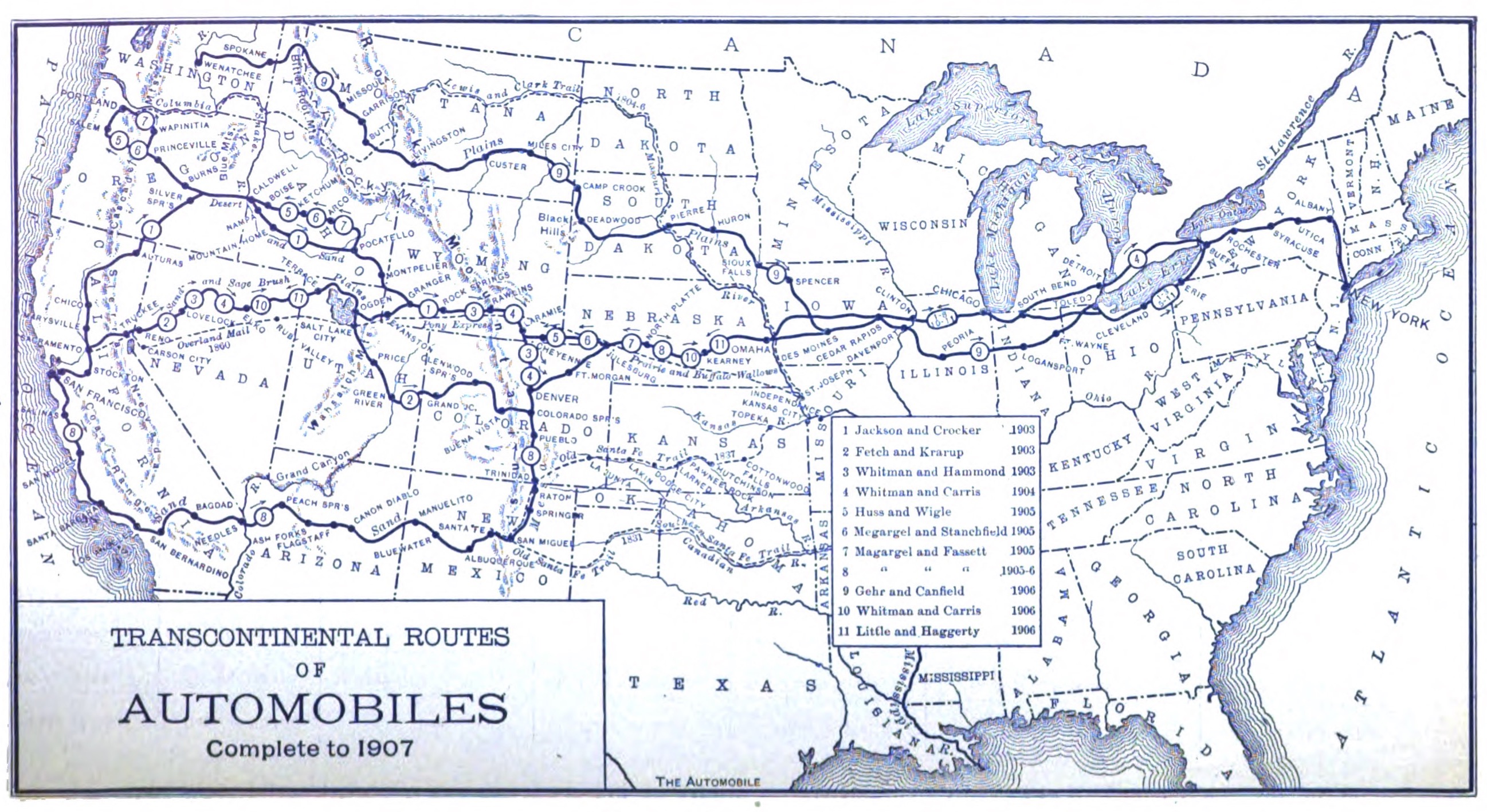The coast-to-coast road trip, that American essential, turns 120 this year. In 1903, Horatio Jackson and Sewall Crocker became the first people ever to drive a car from one side of the U.S. all the way to the other.
Cars were an exciting novelty at the time, and their numbers were exploding — from 8,000 in 1900 to 32,920 in 1903 — but many still considered the “horseless carriage” a passing fad. There were few suitable roads, let alone a nationwide road network. So theirs was an adventure like none before. And it all started with a $50 bet.

A map showing all cross-country trips by automobile that had been completed successfully by 1907. (Credit: AAA Blue Book 1907, v.1 — original from Harvard University and digitized by Google, accessed via Hathi Trust / Public domain)
This map is from the 1907 edition of the Automobile Association of America’s Blue Book. It shows the routes of all the cross-country car trips completed until then: no more than 11 in total — and strangely, all duos. (The Jackson-Crocker trip is highlighted in red.)
Horatio Nelson Jackson (1872-1955) was a medical doctor from a prominent Vermont family. One of his brothers was mayor of Burlington. (John Holmes Jackson won the 1917 mayoral election with a margin of just 10 votes, a record matched by Bernie Sanders in 1981). Another was lieutenant governor of the state.
No maps, no car, and very little driving experience
Dr Jackson was an early automobile enthusiast. While in San Francisco (which he and his wife had reached by train), he accepted a bet that he could drive a car cross-country. He took the wager despite not owning a car, having very little driving experience, and not being in possession of any useful maps.
For such practical matters, Jackson enlisted the help of Sewall K. Crocker, a driver and mechanic, and on his advice purchased a 1903 Winton. He named the two-cylinder, 20-horsepower touring car “The Vermont.” The two left San Francisco on May 23, their car stuffed with sleeping bags and blankets; rubber suits and coats; an axe, a shovel, and other tools; a Kodak camera and a telescope; a rifle and a shotgun; spare parts; and as many cans of gas and oil as they could stow.
The plan was to avoid the deserts of Nevada and Utah and the higher passes of the Sierra Nevada and the Rockies, so the expedition swung north to follow the Oregon Trail in reverse. They were only 15 miles into the journey when the car blew a tire, and they had to use the only spare they had brought.